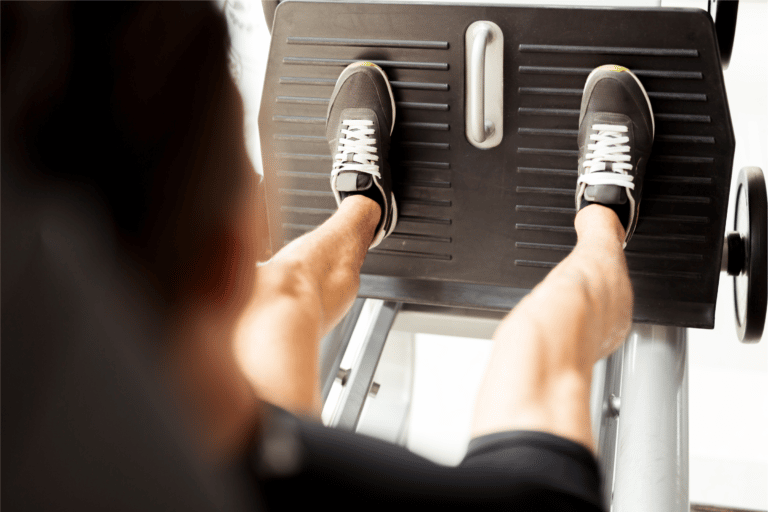How to Warm Up Hamstrings Before Running: 15-Minute Pre-Run Stretch Routine
Preparing your hamstrings for a run is crucial to enhance performance and reduce the risk of injury. Before lacing up your shoes and hitting the track, plan for a 15-minute routine specifically designed to warm up these vital muscles.
This process gently increases blood flow and flexibility, equipping you for a more efficient and safer run.
Your warm-up should be dynamic, focusing on movements that closely mimic running. Begin with low-intensity activities such as walking or easy jogging for five minutes to awaken the muscles.
Following this, incorporate dynamic stretches like lunges, squats, and leg swings, which specifically target the hamstrings, preparing them for the demands of your run.
Best Warm-Up Routine for Hamstrings Before Your Run
A comprehensive 15-minute warm-up routine for your hamstrings before a run could include a combination of dynamic stretches and light aerobic activity to increase blood flow and prepare your muscles for exercise. Here’s a routine that you could follow:
- Brisk Walking or Jogging (5 minutes): Begin with a light aerobic activity such as brisk walking or a gentle jog to gradually increase your heart rate and warm up your muscles.
- Leg Swings – Front to Back (2 minutes): Leg swings are excellent for loosening up the hip flexors and hamstrings. Stand on one leg and swing the other leg forward and back, gradually increasing the range of motion. Do this for 1 minute on each leg.
- Dynamic Hamstring Stretches (2 minutes): Perform dynamic hamstring stretches such as the Frankenstein Walk or Toy Soldier. This involves walking forward and kicking your legs straight out in front of you alternately, trying to touch your toes to your hands without bending the knees.
- Hip Circles (2 minutes): Stand and lift one knee to your chest, then open your hip to the side, making a circular motion. Perform this movement for 1 minute on each side to help mobilize your hip joints.
- Walking Lunges (2 minutes): Take a large step forward into a lunge, keeping your back straight and your front knee above your ankle. Push back to the starting position and repeat with the other leg. Walking lunges activate the hamstrings and glutes while also stretching the hip flexors.
- Cradle Stretch (2 minutes): Stand tall and cradle your right leg at the knee and ankle with your hands. Pull your ankle and knee into your chest to stretch the glutes and hamstrings. Hold for a few seconds and then switch legs. Perform this stretch for 1 minute on each side.
Remember to focus on smooth, controlled movements rather than bouncing or jerking, which can lead to injury. This routine should help prepare your hamstrings and the rest of your lower body for a run, reducing the risk of injury and improving your performance.
Why It’s Important to Warm Up the Hamstrings Before Running
Before diving into exercises, you need to comprehend the structure and function of your hamstrings, understand why flexibility matters, and recognize common injuries to prevent them effectively.
Anatomy of the Hamstring Muscles
Your hamstrings are a group of three muscles located at the back of your thigh. These include the biceps femoris, semitendinosus, and semimembranosus. Their primary function is to allow for the bending of the knee and the extension of the hip, crucial movements when you’re running.
Primary Functions:
- Bending the knee
- Extending the hip
The Importance of Hamstring Flexibility
Flexible hamstrings are paramount in achieving a full range of motion, which translates to more efficient running mechanics. Consistently stretching your hamstrings can lead to improved stride length and decreased resistance in your legs.
Benefits of Flexibility:
- Improved stride length: longer, more powerful steps
- Decreased leg resistance: less force required for leg movements
Common Hamstring Injuries and Prevention for Runners
Injuries such as strains and tears frequently afflict the hamstrings, particularly when they are tight or imbalanced with the quadriceps. Adequate warm-up, including dynamic stretches and strengthening exercises, can help you avoid such issues.
Remember to ease into your stretches, never forcing your muscle into pain.
Injury Prevention Tips:
- Warm-up: prepare muscles for activity
- Strengthen: balance muscles with exercises
- Stretch: improve muscle flexibility
By incorporating this knowledge into your running routine, you’ll be setting yourself up for a smoother, safer workout.
Building Strength and Flexibility
To optimize your running performance, incorporating strength and flexibility exercises in your warm-up can enhance your hamstring resilience and mobility.
Strengthening Exercises for Hamstrings
Strengthening your hamstrings is crucial for powerful strides and injury prevention. Incorporate these exercises into your routine:
- Deadlifts: Start with a moderate weight to ensure proper form. Stand with feet hip-width apart, bend at your hips to lower the weight along your legs, then return to standing.
- Squats: Focus on depth and control. With feet shoulder-width apart, lower your body as if sitting back into a chair, then drive up through your heels.
Flexibility Work for Better Range of Motion
To enhance your hamstrings’ flexibility, which is key for an unencumbered running range of motion, perform these stretches:
- Standing Hamstring Stretch: Place one foot in front of you, toe upward. Bend from the hips, keeping your back straight, and reach toward your toe. Stretch Duration Repetitions Standing Hamstring Stretch 30 sec 3 per leg
- Lying Hamstring Stretch: Lie on your back, raise one leg, and gently pull it towards you while keeping it straight. Hold this position to feel a stretch in your hamstring. Stretch Duration Repetitions Lying Hamstring Stretch 30 sec 3 per leg
By performing these strength and flexibility exercises, you’re preparing your hamstrings for the demands of running, reducing the risk of injury, and promoting better overall leg functionality.
Cool Down and Recovery

After a run, it’s crucial for you to cool down to aid recovery and reduce muscle soreness. The following cool down and recovery techniques emphasize on gently stretching your muscles and using foam rolling to release tension.
Post-Run Hamstring Stretches
Hamstring Stretch:
- Stand and cross your right foot over your left.
- Slowly bend at the waist and lower your forehead to your right knee, keeping both knees straight.
- Hold for 15-30 seconds, then switch sides.
Quadriceps Stretch:
- While standing, hold onto a support and bend your knee to bring your heel toward your buttocks.
- With the same-side hand, grab your ankle and hold the stretch for 15-30 seconds.
- Repeat with the opposite leg.
Using Foam Rolling on your Hamstrings for Recovery
Foam rolling is a self-myofascial release technique beneficial for easing muscle tension and enhancing recovery.
Foam Rolling Method:
- Place the foam roller under your hamstring.
- Gently roll from just above your knee to below your buttocks.
- If you find a particularly tender spot, hold for a few seconds before continuing to roll.
- Perform for 1-2 minutes on each leg.
You can also check out the How to Warm Up Hamstrings Before Running (Full Routine!) web story!






![Are Stationary Bikes Good for Runners? [Plus 3 Great Recommendations]](https://yournext.run/wp-content/uploads/2022/12/are-stationary-bikes-good-for-runners_featured-768x512.png)